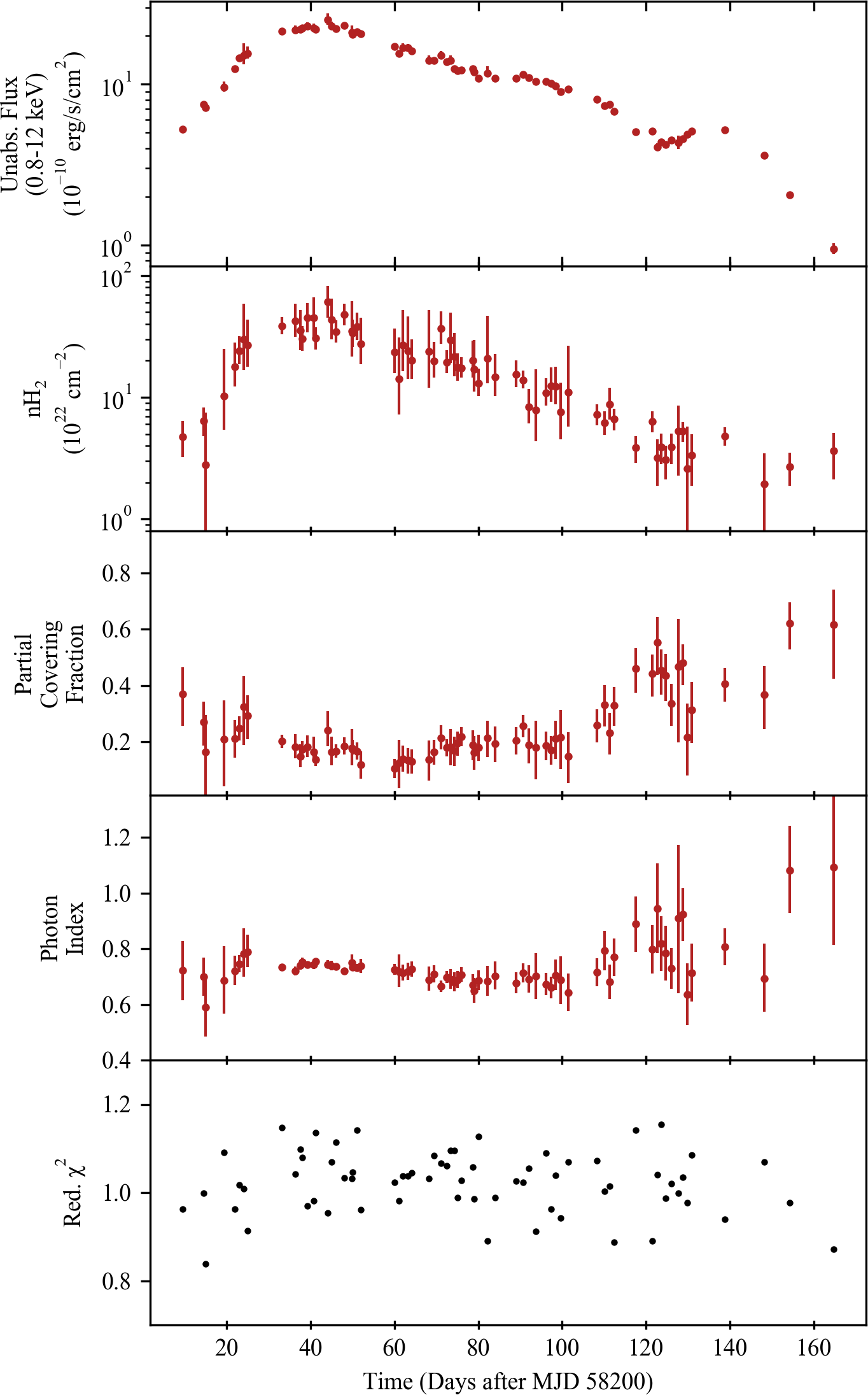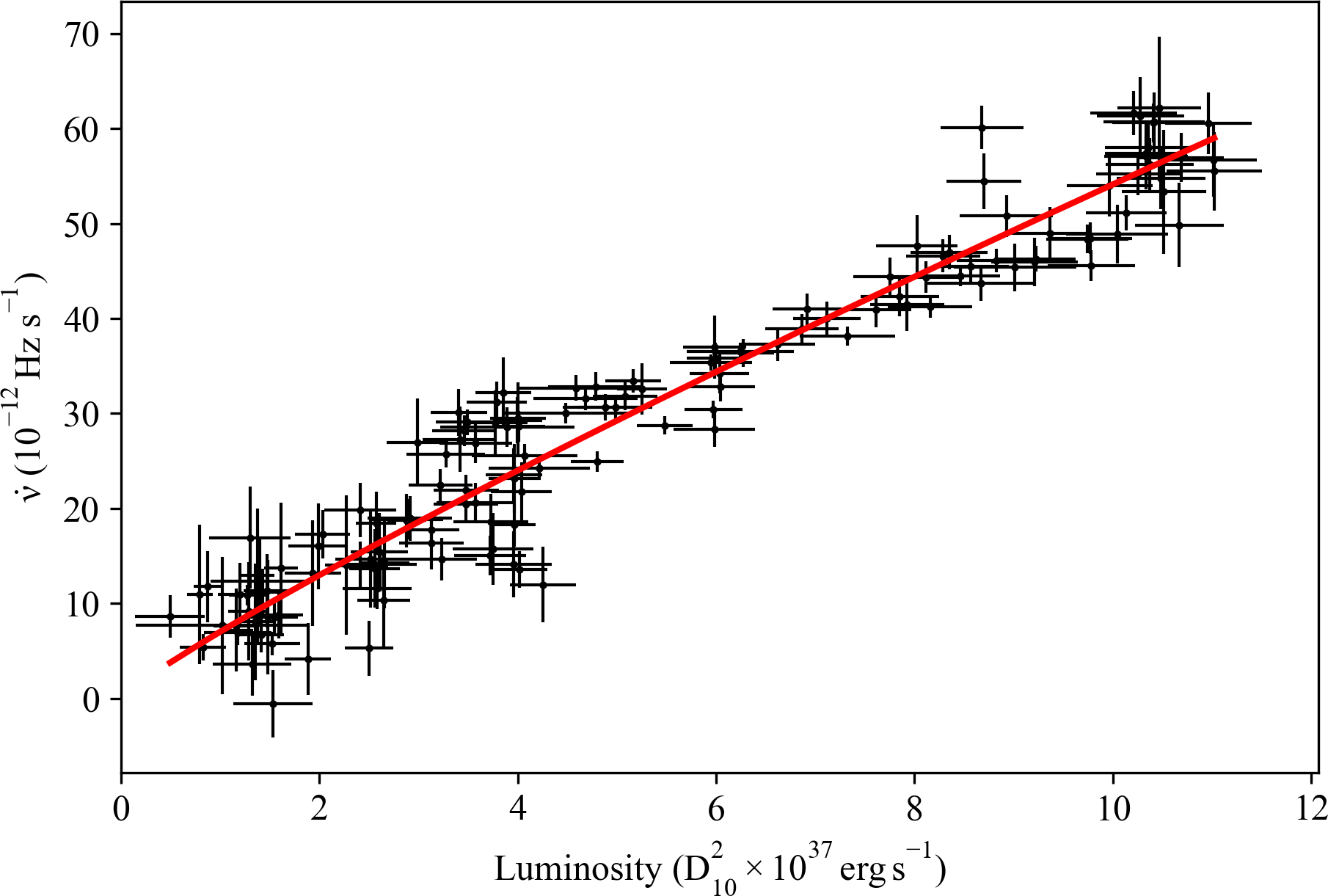NICER / ISS Science Nugget
for December 23, 2021
Classic accretion-disk phenomena in the brightest giant outburst of 2S 1417-624
Since its discovery in 1978, the X-ray binary known as 2S 1417-624 has undergone five "giant" outbursts, each lasting several months; the most recent, and brightest, of these was closely monitored by NICER in 2018. Results of a new analysis of that dataset, by M. M. Serim and colleagues, were published this week in the British journal Monthly Notices of the Royal Astronomical Society.
2S 1417 consists of a neutron star sporadically accreting matter from a massive companion star in an elliptical 42-day orbit. Approximately once every 8-10 years, the companion ejects a substantial quantity of gas; much of it is captured by the neutron star, which spins once around every 17.6 seconds. During these episodes, orbital angular momentum is transferred to the neutron star, spinning it up to higher rotation rates. Over 150 days in 2018, NICER monitored the overall X-ray brightness of this accretion episode, the evolving spectrum of emitted X-ray photon energies, and the changing neutron star spin rate. The spectrum (Figure 1) showed cleared evidence of excess neutral gas partially blocking our view of the X-ray emitting region, with the density of gas tracking the brightness as expected -- the X-ray luminosity scales with the rate of mass flow from one star to the other. A weaker variation in the accretion geometry was also seen, indicated by the slope of the overall X-ray spectrum, which depends on the pressure balance between infalling mass and outgoing radiation near the neutron star's surface.
Timing of the neutron star's pulsations, with NICER and NASA's Fermi gamma-ray telescope, also revealed behavior typical of steady spin-up from an accretion disk. Overall, the spin frequency increased from 57.13 to 57.47 millihertz across the outburst, with short-term variations that, again, tracked the mass-transfer rate as represented by X-ray luminosity. The scaling of these variations matched long-established theory -- with, however, a somewhat surprising implication that the neutron star's magnetic field must be quite high, in the class of so-called "magnetars". Observations of future outbursts will be needed to determine whether this conclusion can be confirmed or refuted.


Figure: Left: Evolution with time of model parameters used to describe NICER spectroscopic measurements for the 2018 giant outburst of 2S 1417. The top-most panel shows the measured intrinsic brightness of the system. The parameter nH2 in the second panel represents the density of neutron gas in the vicinity of the accreting neutron star; the "partial covering fraction" in the third panel indicates what portion of the X-ray emission was successfully transmitted through this dense gas. "Photon index" in the fourth panel is a measure of the slope of the X-ray energy spectrum, indirectly probing the altitude above the neutron star surface at which most of the X-rays are emitted. The bottom-most panel is a measure of goodness-of-fit for the model, with values around 1.0 indicating a reliable fit. Right: A measure of the torque exerted on the neutron star in 2S 1417 -- indicated by the time-derivative ("nu-dot") of its measured spin frequency (the Greek letter "nu") -- as a function of the measured X-ray luminosity of the system during the 2018 giant outburst. The slope of the best-fit red line is consistent with theoretical expectations for spin-up due to mass transfer from a companion star through an accretion disk.
<< Previous
Main Index
Next >>